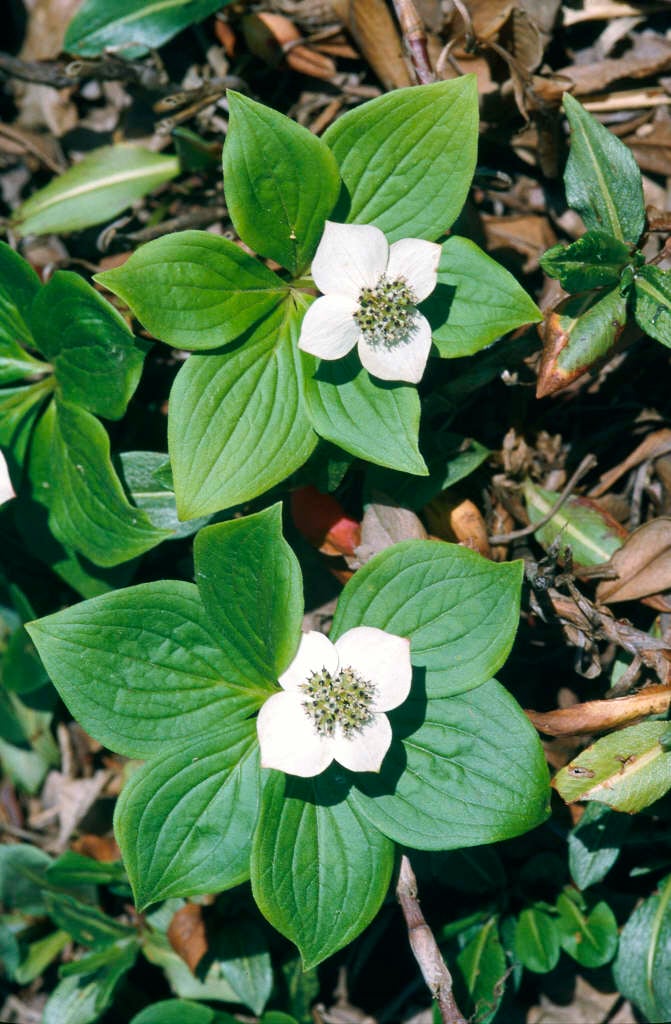Cornus canadensis
dwarf cornel
A rhizomatous herbaceous perennial forming a wide mat of oval leaves borne in whorls on erect stems 10-15cm in height. Conspicuous oval white bracts surround greenish flowers in late spring and early summer, followed by red berries
Synonyms
Chamaepericlymenum canadenseSize
Ultimate height
Up to 10cmTime to ultimate height
5–10 yearsUltimate spread
0.5–1 metresGrowing conditions
Moisture
Moist but well–drainedpH
Acid, NeutralColour & scent
| Stem | Flower | Foliage | Fruit | |
| Spring | Green White | Green | ||
|---|---|---|---|---|
| Summer | Green White | Green | ||
| Autumn | Green | Red | ||
| Winter |
Position
- Full sun
- Partial shade
Aspect
South–facing or North–facing or East–facing or West–facing
Exposure
Exposed or Sheltered Hardiness
H7Botanical details
- Family
- Cornaceae
- Native to GB / Ireland
- No
- Foliage
- Deciduous
- Habit
- Matforming
- Genus
Cornus can be deciduous shrubs or trees, or creeping, woody-based perennials, some with brightly coloured young stems. Tiny flowers are borne in dense clusters, sometimes with showy bracts. Many have fine autumn colour
- Name status
Correct
- Plant range
- Greenland to Alaska
How to grow
Cultivation
Grow in moist acidic soil in sun or partial shade. For more advice, see flowering dogwood cultivation
Propagation
Propagate by division
Suggested planting locations and garden types
- Low Maintenance
- Ground cover
Pruning
Pests
Generally pest-free but may be susceptible to horse chestnut scale
Diseases
May be susceptible to cornus anthracnose and honey fungus
Get involved
The Royal Horticultural Society is the UK’s leading gardening charity. We aim to enrich everyone’s life through plants, and make the UK a greener and more beautiful place.
